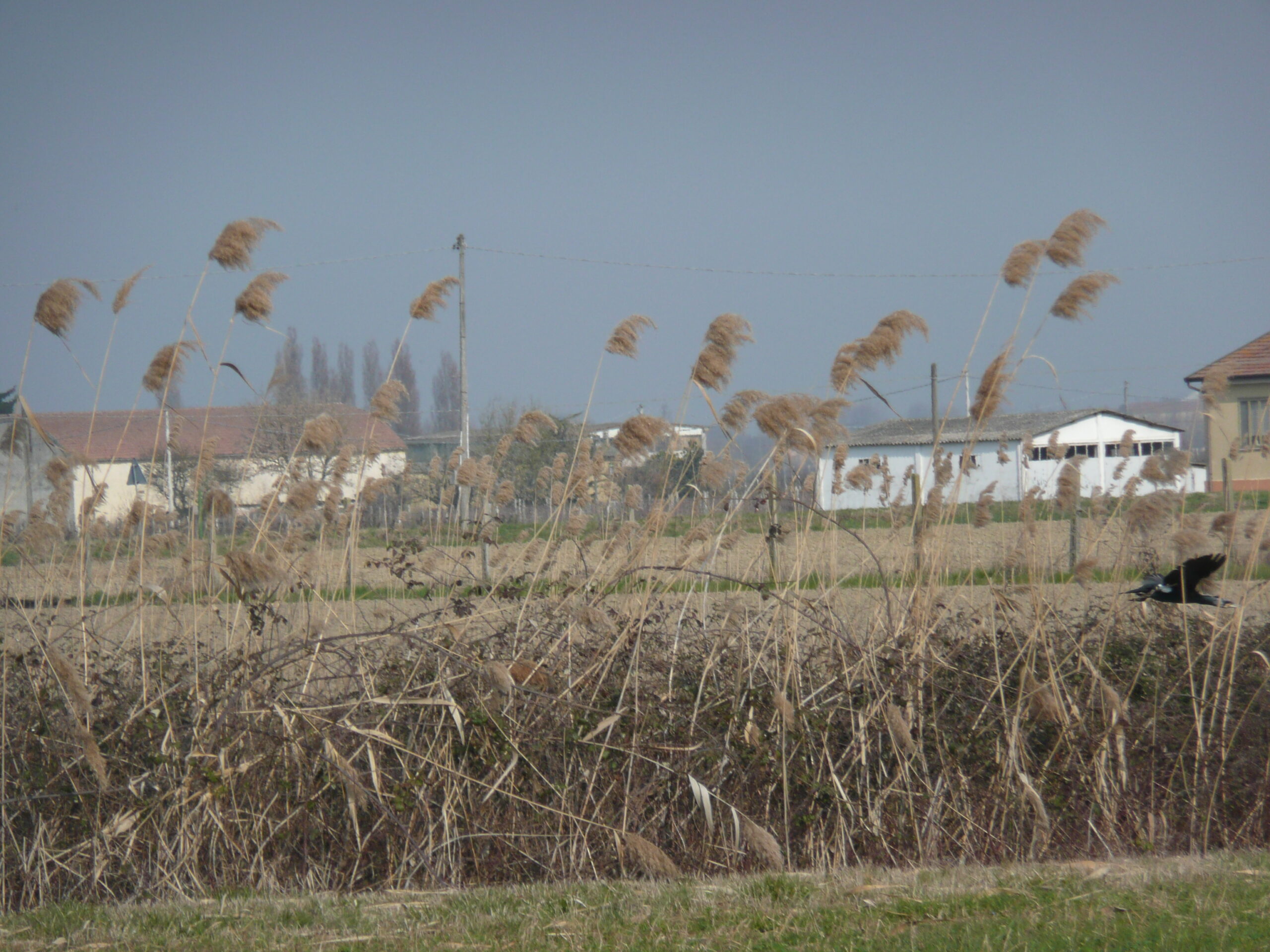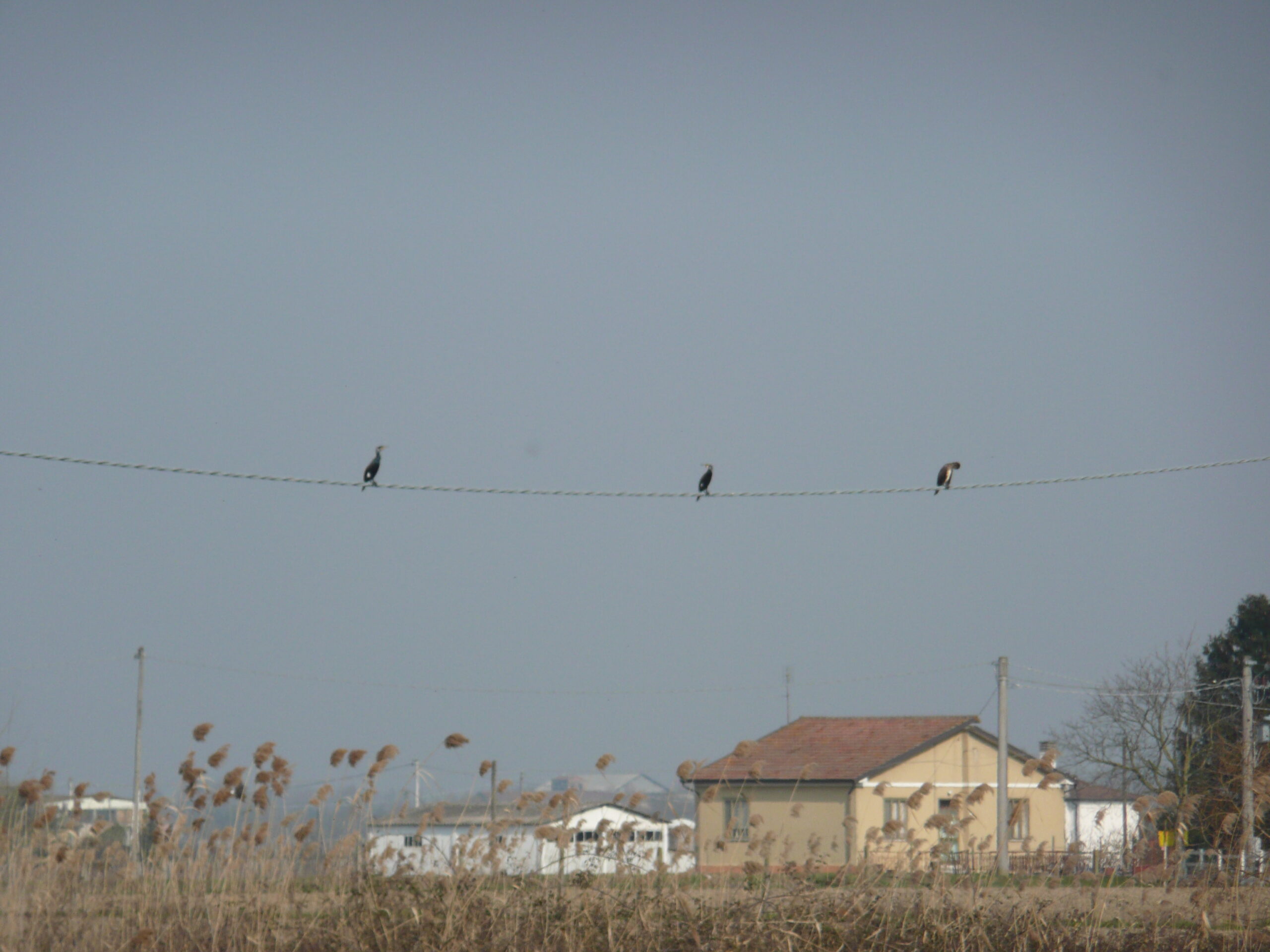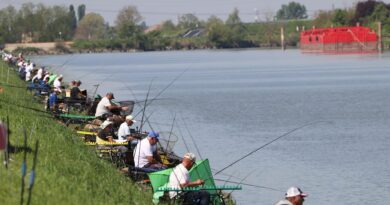LOTTA AI CORMORANI E INIZIATIVE
L’amico di Match Fishing, lo svedese Christer Olburs, ha seguito su questo sito le vicende riguardanti i cormorani arrivati per la prima volta nelle nostre terre e a riguardo ci ha fornito diverso materiale che in parte vi hi ho proposto su questo sito nei mesi passati.
Christer ci ha scritto nuovamente, e per questo lo ringraziamo per l’attenzione che ci dedica, per consegnarci un documento che vi propongo integralmente.
Adesso non ci sono più dubbi sulla natura del crollo della pescosità ad Ostellato, i cormorani arrivati in massa l’inverno scorso (erano qualche migliaio) sia ad Anita che ad Ostellato hanno divorato tutto il pesce possibile tant’è che oggi guarda caso sul Circondariale, nonostante le temperature si siano elevate, di pesce se ne prende poco anzi in ogni gara si registrano purtroppo diversi cappotti.
I pesci, che per noi pescatori sono fonte di divertimento, per le aziende del settore rappresentano interessi economici enormi e per le economie locali posti di lavoro e fonte di reddito, non ci sono più.
Ero a Roma la settimana scorsa alla cerimonia di presentazione dei GIOCHI MONDIALI DELLA PESCA presso il palazzo del CONI e prendendo la parola nel mio intervento ho evidenziato questo problema che ha messo in ginocchio la pesca nei fiumi del nord Italia e adesso anche i canali dell’Emilia Romagna.
In sintesi ho detto che la pesca ha senso se si prendono pesci e da quando sono arrivati questi uccelli neri, divoratori di pesci, i pescatori non si divertono più.
Purtroppo sono stato l’unico a parlare di questo problema e la risposta mi è stata data da un rappresentante francese, ovviamente in lingua francese, il quale ha confermato l’esigenza di fare di più per tutelare la fauna ittica e che le coscienze ambientaliste stanno allentando le posizioni integraliste di difesa ad oltranza di questo volattile che purtroppo in tutta Europa ha fatto danni devastanti all’ittiofauna delle acque interne.
Dispiace riscontrare che alcuni rappresentanti delle istituzioni locali, presenti alla conferenza stampa a Roma, non abbiano preso la parola per confermare la necessità di organizzare una azione forte e urgente per difendere l’ittiofauna dal cormorano.
Il clima attorno ad Ostellato sta cambiando giorno dopo giorno negativamente e a conferma segnaliamo che alcune strutture alberghiere della zona hanno ricevuto disdette di prenotazioni da parte di pescatori.
Poi dovremo fare i conti anche con l’assurdità di certe autorizzazioni rinnovate dalla Provincia di Ferrara a pescatori di professione.
E’ vero che queste autorizzazioni prevedono il vincolo di pescare con le reti in tratti di canali ben definiti e non sui campi di gara ma comunque l’asportazione di pesce pare essere illimitata nelle quantità e nelle specie con grave impoverimento dei canali.
Ecco queste sono le contraddizioni che uccidono la pesca, i posti di lavoro nel settore e le economie locali.
Ieri sono andato a rinnovare la licenza di pesca perchè erano scaduti i 6 anni di validità, ho speso 5 euro nelle foto, 22,72 nella tassa regionale e sono servite due marche da bollo da 14,62 euro. Totale costo 56,96.
Ho sempre chiesto poco alle istituzioni ma vorrei che una parte dei miei, nostri soldi, fossero spesi non per fare i soliti ripopolamenti di pesci polli come le trote di allevamento seminate nei torrenti o le tinche rilasciate nei fiumi, ma per avere una politica seria di tutela della fauna ittica e degli ambienti acquatici.
Serve una legge quadro nuova che ridefinisca le specie di pesci da classificare come alloctoni e autoctoni, servirebbe una riforma della gestione delle acque conferendo ad Associazioni private ciò che oggi è gestito dal pubblico.
Questa sarebbe la grande rivoluzione della pesca, acque curate e protette da una gestione privata e non acque allo sbando come invece abbiamo adesso.
Ognuno di noi sarebbe ben felice di pagare una tassa per andare a pescare purchè ci si diverta e non arrivare in un posto da pesca, con attrezzature costosissime per non prendere niente.
In Emilia Romagna i pescatori con la licenza da pesca sono circa 8.000 mila mentre in tutta Italia i tesserati alla FIPSAS sono circa 250.000 mila, insomma siamo un esercito che se uniti potremmo dire la nostra.
Per questo Pesca In e Match Fishing stanno valutando se organizzare una petizione popolare, ovvero una raccolta di firme per la difesa della fauna ittica, da consegnare al Governo e se necessario anche alle Istituzioni regionali e provinciali.
Alessandro Scarponi
CORMORANO IN VOLO SUL CANALE A MEDELANA

CORMORANI APPOLLAIATI NEI PRESSI DI MEDELANA

VISUALIZZA I VIDEO
MANIFESTAZIONE CONTRO I CORMORANI
CORMORANI ALL’ATTACCO DELLE ANGUILLE
IL DOCUMENTO DI CHRISTER OLBURS
The European Commission’s protection of the Chinese cormorant Phalacrocorax carbo sinensis Blumenbach 1798, a disaster for the fish fauna, a fiasco for bird protection and an environmental scandal.
The European cormorant issue is a very complicated, controversial and mythical environment policy issue at the interface between nature and culture and between conservation and invasion biology.
Two different cormorants
As early as 1979, the Commission quite correctly stated that the bird in Europe with the common name “Great Cormorant” is actually two different birds, the large North Atlantic Great Cormorant Phalacrocorax carbo carbo Linnaeus 1758 (carbo) and the much smaller Chinese cormorant (syn. Lesser Great Cormorant) Phalacrocorax carbo sinensis Blumenbach 1798 (sinensis). Currently, the rank of these two taxa is that of subspecies / geographical races. The Commission decision in the Council Directive 79/409/EEC (Birds Directive) of April 2, 1979 on the conservation of wild birds in ” Appendix 1 – Species of particular conservation interest” to include “Phalacrocorax carbo sinensis | Cormorant (continental race) “was however incorrect and has no scientific basis.
A formidable expansion
When the decision was taken in 1979, there were only a few thousand sinensis distributed in a few colonies scattered across Europe, in Sweden, Poland and Germany, and with a core area in the Netherlands / Denmark. The subsequent explosive increase in the number of individuals and new colonies in more and more European countries led the Commission in 1997 to remove sinensis from Annex 1 with the document Commission modifies the “Birds” Directive with respect to the Great Cormorant . The measure was seen by the Commission as a major success for the Birds Directive and bird protection, but had no effect on the continued expansion as the number sinensis in Europe in autumn 2010 was estimated at nearly 2 million.
A fiasco for bird protection
The Commission is not alone in its unscientific attitude towards sinensis. Also the bird conservation organization BirdLife Europe sees the expansion of “The Great Cormorant’ i.e. sinensis as a major success for its bird protection and lobbying when paradoxically enough it is exactly the opposite, a fiasco that undermines the organization’s role as a key player for a science-based bird conservation . In Sweden, the lobbying has been so successful that the Environmental Protection Agency gave the secretary for the protection of birds of BirdLife Sweden (SOF) the task in 2002 and 2010 to formulate so-called “national management plans for cormorant “, which is devastating for the credibility of both the authority and of BirdLife Sweden.
Myths and Science
All over Europe the cormorant debate is intense, and a variety of opinions abound in discussion forums and media. In Germany the debate has been particularly intense, which led BirdLife Germany (NABU / LBV) to designate “Der Kormoran “as bird of the year 2010. In order to support the campaign the journal Der Falke published a special edition Der Kormoran, Shutz für einen Fischräuber (57/2010 ), where a large number of highly qualified representatives of German bird research once and for all should refute some of those in their opinion false theses that circulate around the “Cormorant”, but succeed instead with bravado in stirring up directly false myths. That sinensis is meant by “Der Kormoran “must be considered implicit since all observations of carbo in Germany are now recommended to be reported to the German Rarity Committee.
Two of the thesis, which in summary reads “Der Kormoranbestand in Deutschland und in Europa, stiegt immer weiter an” can everyone interested in birds or fish and spend time at European waters observe with their own eyes is correct. Although metadata clearly indicates significant methodological difficulties to establish with certainty the numbers of sinensis and the data presented from different areas are uncertain estimates there is no doubt that the increase is enormous. Local temporary setbacks caused by population-limiting factors such as locally depleted fish populations or nesting sites plus difficult overwintering conditions some years, may of course result in a significant mortality of young birds and that colonies disappear. Also the different interpretations of the EU regulatory framework by the Member States’ has resulted in measures such as oiling of eggs and hunting on breeding and wintering locations. Measures that have had some effect locally, but with a very limited impact on the overall population growth in Europe.
Also the thesis “Der Kormoran hat keine natürliche Feinde” is correct since, with one exception, sinensis has no natural predators in Europe. Undoubtedly opportunistic feeders and kleptoparasites as the Sea Eagle kill several sinensis, but this is of no great significance for the overall growth of the population. Other invasive animals are seriously proposed as important population-regulating predators on sinensis eggs and young, such as the North American raccoon and ironically also the only natural predator of sinensis on European soil, the Korean raccoon dog. Sinensis has an impressive reproductive potential, and can be long-lived (over 20 years) and have a clutch size of up to six (usually 3-4). Although breeding usually starts at 3 years of age the biological prerequisites thus clearly indicates that the number of sinensis in Europe will continue to increase strongly if no action is taken.
A disaster for the fish fauna
The thesis “Der Kormoran ist für den Rückgang von Fischen verantvortlich” is supported by an increasing number of studies which point out sinensis as the single most important mortality factor for a wide range of local fish populations. And this despite the fact that the calculations are usually based on the direct consumption of fish, which represent only a fraction of the total mortality sinensis causes. Already in 1979 sinensis had a significant effect on the fish fauna in close vicinity to the breeding colonies and in wintering areas. With the continued expansion, more and more local fish populations were hit hard by the increased predation. Initially, damage was noted mainly for freshwater species of interest to the fishery such as perch, pike and zander, but subsequently also for marine species such as cod and migratory species such as eel, salmon and trout. Particularly alarming is the threat to some endangered species as the Common Nase (Chondrostoma nasus) and grayling, which face extinction with major genetic losses as a result. With several million sinensis fishing in European waters there is an ongoing disaster for the European fish fauna, and totally contrary to Council Directive 2000/60/EC of October 23, 2000 (the Water Directive) and should engage all European environmentalists, conservation biologists and geneticists, and not just be a matter for desperate fish conservationists.
The perhaps most controversial thesis “Der Kormoran ist kein einheimischer Vogel ” is resolutely rejected by Prof. Kinzelbach, one of the foremost experts on the historical bird fauna of Europe. In the Nomenclature und Geschichte: Der Kormoran in Mitteleuropa Kinzelbach develops the arguments in an article from 1999 entitled Kormoran im Binnenlands Mitteleuropas: Eingeschleppt … (Der Falke 46), which strongly rejects the suspicion put forward from several sources that sinensis could have been introduced to Europe and is alien to the European fauna. Initially Kinzelbach succeeds in separating carbo and sinensis but soon mixes the two taxa and decisively insists that finds of subfossils in Europe consists of sinensis, although only carbo have been identified with certainty. Older historical details on “cormorants”, for example, from Hildegard of Bingen (1100’s), Emperor Frederick II (1200s), and Conrad Gessner (1500’s) is according to Kinzelbach unequivocal evidence of sinensis. And this despite the fact that it can be more easily explained by observations of carbo, which since the last ice age is naturally occurring in Europe. A bird that formerly nested along most of the coasts of Europe, the Mediterranean and the Baltic Sea and in all times and especially during the winters made occasional visits far inland. Neither the historical details presented by Kinzelbach of tree nesting, both sinensis and carbo are facultative tree nesters, nor the etymology support the claim that sinensis has a long European history.
The publication “Der Kormoran, Schuts für einen Fischräuber” will doubtless be a subject of study for science history and illustrates the risk of blinded by love for birds not see the obvious and confusing beliefs and emotions with science. That access to all the scientific literature in the world is no guarantee for asking the relevant questions. How easy it is to fall back into the typological trap and rely on a few fundamenta divisionis rather than a methodical analysis based on a critical review of all available biological and historical information. To ignore one of the foundations of scientific biology, the correct identification of the organism being studied, and alternately using the common names “cormorant” or “Great Cormorant” instead of consistently and clearly distinguish the relevant taxa, carbo and sinensis. An omission which, with few exceptions, is made in the countless works published on the subject during the past 30 years and thereby made ‘the cormorant issue” biologically incomprehensible. This has, intentionally or unintentionally, resulted in something that can better be described by the term disinformation.
An environmental political scandal
However, it is the European Commission who has the ultimate responsibility for the serious ecological and economic losses caused by sinensis to the European nature, fish fauna and fisheries, by the erroneous decision of 1979. The accumulated costs probably amount to several million € and are increasing every year. The genetic and ecological threats to carbo and the risk of sinensis spreading parasites, bacteria and viruses in the European fauna make “the cormorant issue” too serious to be reduced to an emotional quarrel between bird lovers and fishermen. Amazingly, sinensis is not included in the list 100 of the worst ‘ invasive aliens in Europe, which was launched with great rumble in 2008 by the Commission project Delivering Alien Invasive Species In Europe (DAISIE). Sinensis should have a given place on that list, high above the Canada Goose, the American Ruddy Duck and the African Sacred Ibis in terms of impact on biodiversity, economy and health. It is also remarkable that sinensis is missing in the Assessment to support continued development of the EU Strategy to combat invasive alien species which the Commission presented in 2010.
In order to correct the Commission`s error regarding sinensis and to reduce the risk of repeating similar environmental political scandals, the European Commission must immediately;
- in accordance with the subsidiary principle revise the EU regulations to eliminate the formal obstacles for Member States to include Phalacrocorax carbo sinensis Blumenbach 1798 on the list of animals that are allowed to be hunted all year round, thus facilitating the formulation of scientifically and ethically correct national action plans against this alien invasive bird.
- carry out a transparent revision of the process and the scientific basis for, as well as of the biological and economic consequences of, the Commissions erroneous decision of 1979.
Christer Olburs 01/03/2011
A biologist interested in birds and fish and the author of the essay “The Chinese cormorant Phalacrocorax carbo sinensis Blumenbach 1798 – an alien bird 15/10/2008″.
he




